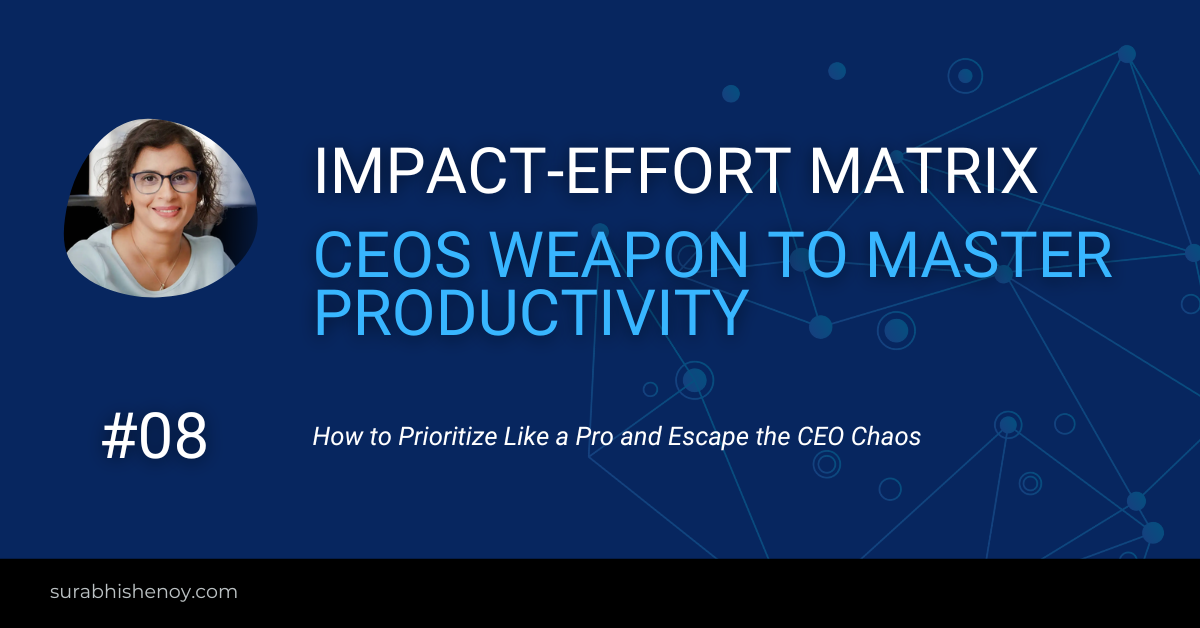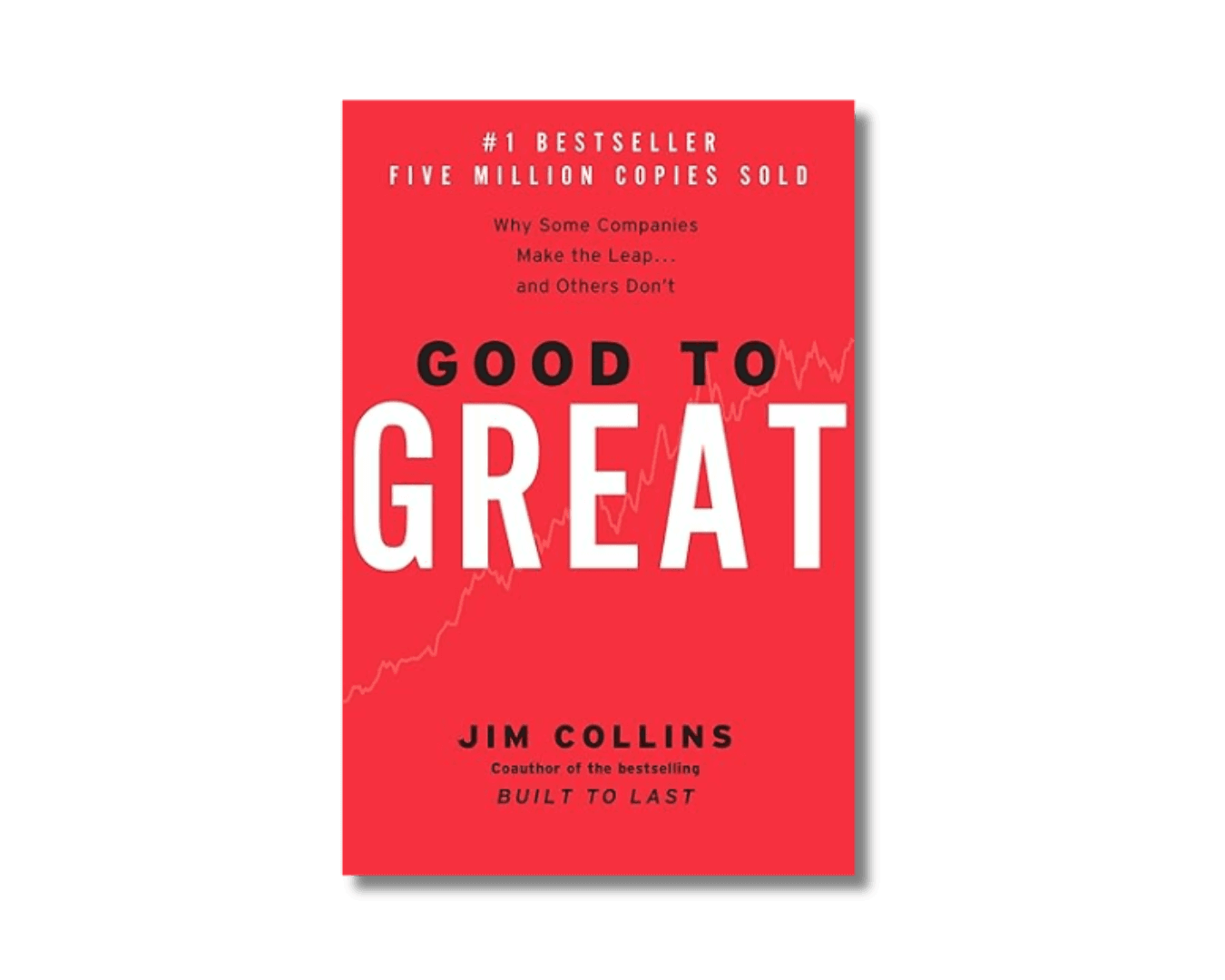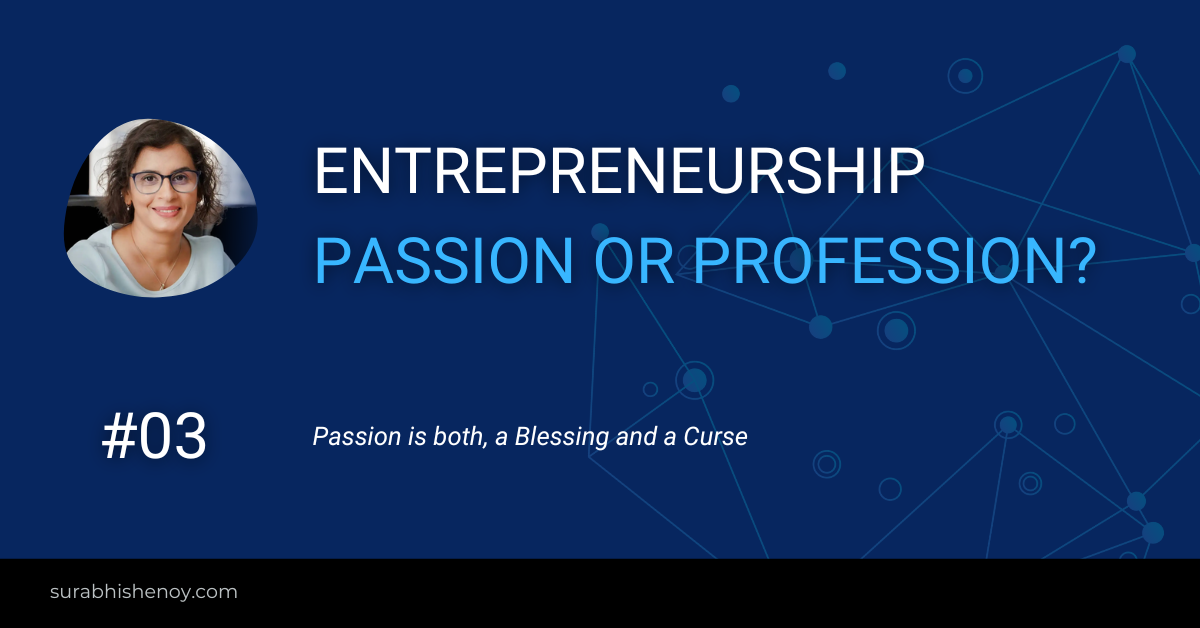How to Prioritize Like a Pro and Escape the CEO Chaos
Let me guess – you start your day ready to conquer the world.
You’ve got a plan. A to-do list that’s supposed to be your path to glory.
But by 10 AM? It’s all downhill.
Emails flood in.
Slack channels light up like fireworks.
Your team needs answers, and right now!
And suddenly, three stakeholders want three different things. All marked urgent.
Sounds familiar?
As a tech founder, it feels like you’re juggling flaming swords – except one wrong move, and everything goes up in flames.
But here’s a little secret I wish I’d known earlier:
Urgent isn’t always important.
Important isn’t always urgent.
That’s where the Impact-Effort Matrix comes in.
It’s a fancy name for a simple tool that helps you cut through the chaos, make better decisions, and get your time back.
And the best part? You don’t need a PhD to use it.
What is the Impact-Effort Matrix?
Picture this: a simple grid with two axes – Impact (how much it moves the needle) and Effort (how much time and energy it’ll suck out of you).
You plot your tasks across these two axes, and voila, you can finally see what’s worth your time.
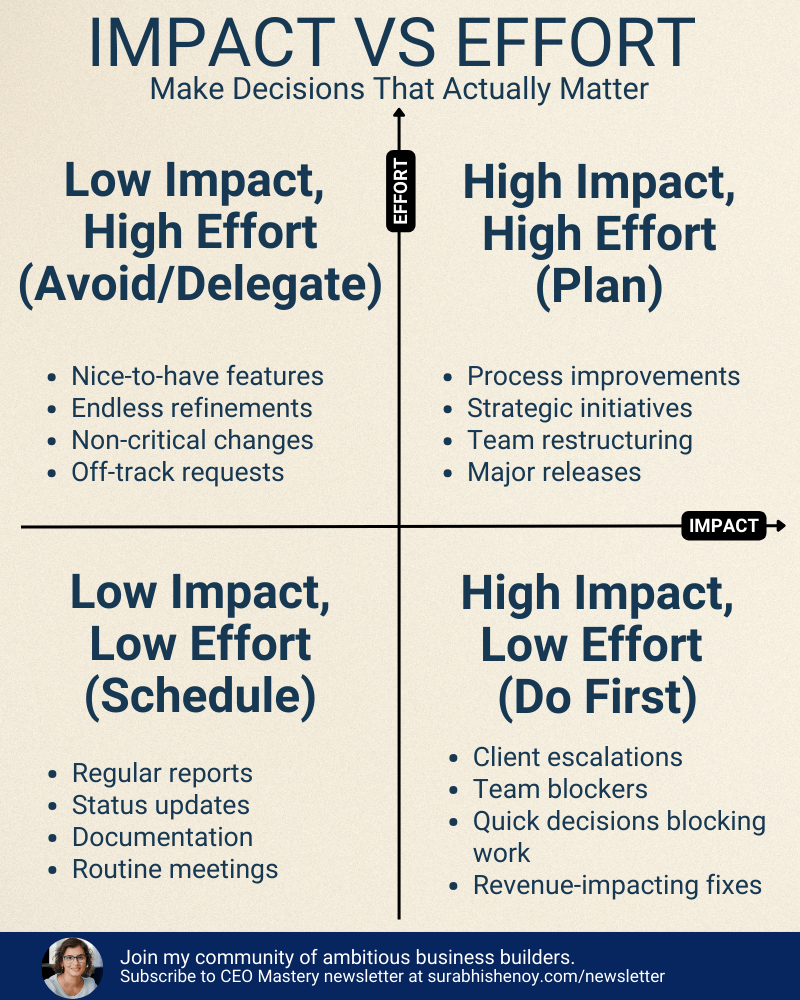
Here’s how it breaks down:
- High Impact, Low Effort (Do First): The golden ticket. Quick wins that pack a punch.
- High Impact, High Effort (Plan): Big moves that need serious time – like launching a new feature or expanding to a new market.
- Low Impact, Low Effort (Schedule): The maintenance work that’s necessary but not thrilling – status updates, reports, routine meetings.
- Low Impact, High Effort (Avoid/Delegate): The time-suckers. The ones that make you question why you’re doing them at all. Spoiler: you probably shouldn’t be.
It’s a game-changer for Founders and CEOs.
But let’s make sure you’re using it right.
Why the Impact-Effort Matrix Works for Tech CEOs
1. It simplifies the overwhelm.
You’ve got a million things coming at you. The matrix gives you clarity. It’s like having a bird’s eye view of your chaos and knowing exactly what to tackle first.
2. It kills the “Urgency” trap.
Not every email with a red exclamation mark deserves your attention. This matrix teaches you to separate the noise from what truly matters – those things that drive growth, not just reaction.
3. It frees up your time for real leadership.
By letting go of low-impact work, you get back to being the visionary your team needs. Trust me, the matrix will help you find that sweet spot where you can lead without burning out.
How to Use it Without Getting Stuck in the Details
You don’t need a fancy setup: just a notebook, whiteboard, or your favorite project management tool.
Here’s how you get started:
Step 1: Brain-dump everything.
Yes, everything. Write down all the stuff that demands your time – big projects, daily interruptions, the “got a minute?” moments. Be brutally honest. It might look messy, but that’s the point.
Step 2: Plot your tasks.
Take a look at that list and start placing each task into the matrix:
- Does it directly drive revenue or solve a major pain point?
It’s high impact. - Will it take hours of deep work? Or can it be wrapped up in 30 minutes?
That’s your effort score.
Pro tip: Don’t overthink this part. It’s better to get rough placements down than to spend hours debating whether that client call is medium or high effort.
Step 3: Tackle each quadrant like a boss.
- High Impact, Low Effort: Do these right away. They’re your low-hanging fruit – the ones that make you look like a hero before lunch.
- High Impact, High Effort: Block time for these. It’s about planning, not cramming. Break them into smaller steps so they don’t swallow your whole week.
- Low Impact, Low Effort: Set specific time slots for these – think Friday afternoons or low-energy hours. This is your “maintenance mode.”
- Low Impact, High Effort: Delegate or kill these off. Your goal isn’t to look busy; it’s to make an impact. And these tasks? They’re dead weight.
Step 4: Review and adjust (because nothing stays still)
Business moves fast – especially in tech.
Your priorities will shift. Set a weekly 15-minute review to reassess and reassign tasks. Think of it like tuning up your car; you’ll keep running smoothly.
What Can Trip You Up (And How to Avoid It)
Let’s get real for a second. Here’s where most founders stumble:
Analysis paralysis:
Spending hours debating where to put each task? It defeats the purpose. Speed over precision. Place it, move on.
Scope creep:
High-effort projects have a way of growing legs. Guard your time by defining clear boundaries and deadlines – don’t let them spread out like a bad codebase.
False urgency from others:
The sales team thinks everything is urgent. Here’s the fix: Make the matrix visible. Train your team to see how their requests fit into the big picture. Suddenly, they’re solving problems without blowing up your phone.
How to Maximize Your Impact-Effort Matrix (Without Losing Your Mind)
I know, you’re busy.
So here are some quick tips that’ll get you more mileage out of this tool:
Visualize it: Use tools like Trello or Asana to create a digital version of the matrix. It makes sharing with your team easier – and it feels more official.
Batch the small stuff: Those low-impact tasks? Batch them together. Respond to all those “quick emails” during a 30-minute window. No more context-switching every 5 minutes.
Block distraction-free time: Book two hours of focus time on your calendar daily. No meetings, no Slack. Guard this time like it’s your lunch break.
Automate anything low impact: Recurring reports? Status updates? Automate them. There’s no heroism in manually crunching numbers every week.
Use Fridays for reflection: Take 15 minutes every Friday to ask, “What did I do that made the biggest difference?” and “What do I need to adjust for next week?” It’s like clearing the cache for your brain.
Here’s a cheat sheet you can download and take a print to stick at your desk.
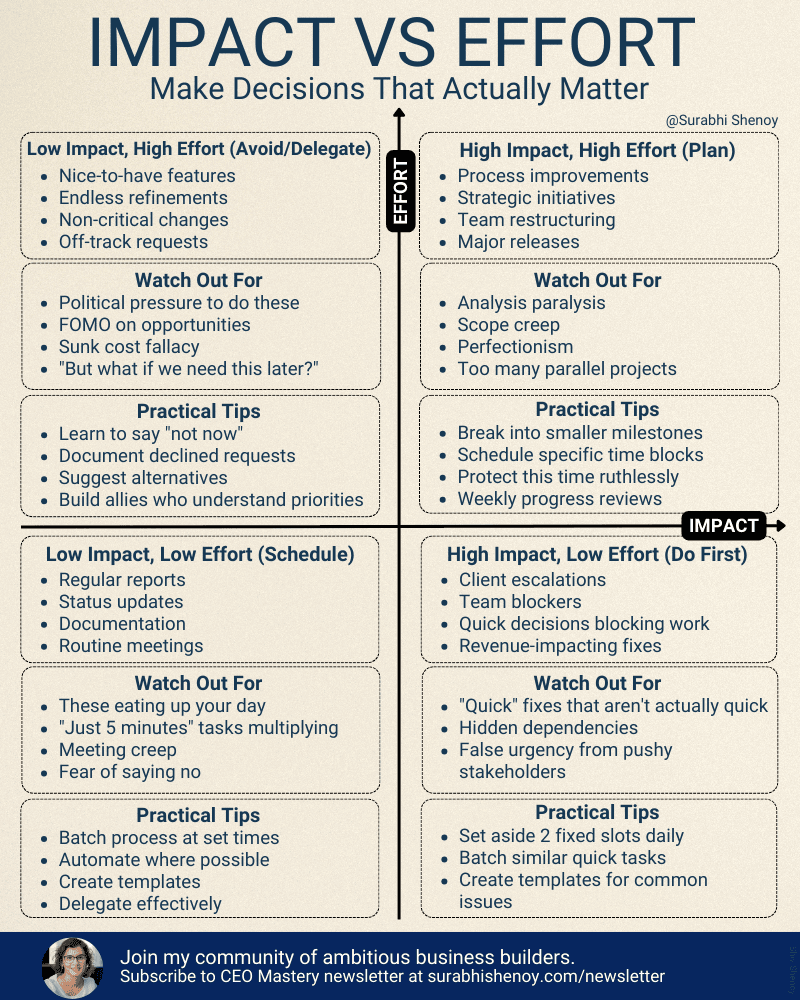
Ready to Take Control of Your Time?
Here’s the deal: The Impact-Effort Matrix won’t fix everything. But it will give you clarity, control, and confidence in your decisions. And that’s worth more than any productivity hack out there.
So go ahead – try it for a week.
Plot those tasks, focus on what matters, and watch the chaos fade away.
Which quadrant are you spending the most time in?
If you want more tips like this, make sure to subscribe to the CEO Mastery Newsletter.
Get one actionable tip every Thursday that’ll make you a better leader and make your business run smoother.

